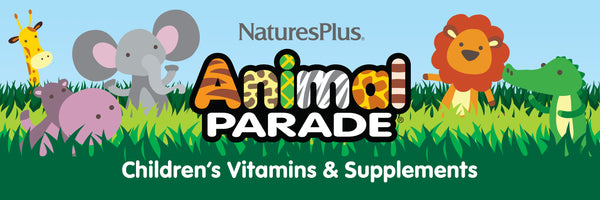Meditation doesn’t have to be intimidating. For beginners, knowing where to start can feel overwhelming, but meditation is one of the simplest yet most effective practices for creating inner calm and focus. With the proper guidance, anyone can learn this valuable skill.
This guide will walk you through whatmeditation is, its benefits and actionable steps to begin your personalized practice. Plus, you’ll find tips to help you stay consistent and make mindfulness a regular part of your life.
What is Meditation?
Meditation is a practice that trains the mind to achieve clarity, relaxation and awareness. It involves techniques such as focused breathing, mindfulness or visualization to help you center your thoughts. It’s not about escaping your mind—it’s about learning to be present with it.
How Meditation Affects the Mind and Body
Studies have shown that meditation can promote emotional well-being and mental clarity by reducing stress levels and supporting focus. Physically, it can promote lower blood pressure and improve sleep quality. For beginners, developing a consistent meditation habit can positively influence how you respond to life’s challenges, making you more resilient and mindful day to day.
How to Get Started with Meditation
1. Create a Comfortable Space
Set up a quiet, distraction-free area in your home dedicated to meditation. It doesn’t have to be an elaborate space—a simple chair, cushion, blanket or even a corner of your room will work fine.
2. Set Realistic Goals
Start small. Plan to meditate for 3–5 minutes each day and gradually increase as you become more comfortable. It's okay if your mind wanders initially—what matters is showing up consistently.
3. Establish a Routine
Pick a time that works for you, whether it’s early morning, during lunch breaks or in the evening. Integrating meditation into your daily schedule makes it easier to build a lasting habit.
Breathing Techniques to Calm Your Mind
Breathing is the foundation of many meditation practices. These simple exercises help quiet the mind and bring focus to the body.
Diaphragmatic Breathing
- Place one hand on your chest and the other on your belly. Take a steady, deep breath through your nose, feeling your belly rise. Exhale slowly through your mouth. Repeat this cycle 5–10 times to relax your body.
Box Breathing
This technique is easy to remember and helps restore calmness. Follow these steps:
- Inhale for a count of 4.
- Hold your breath for a count of 4.
- Exhale for a count of 4.
- Pause for a count of 4 before starting again.
Alternate Nostril Breathing
Gently close your right nostril with your thumb and inhale through your left nostril. Switch sides, closing your left nostril and exhale through your right nostril. Repeat for five cycles to balance energy and promote focus.
Mindfulness Meditation Made Simple
What is Mindfulness?
Mindfulness focuses on being fully aware of the present moment. It’s about noticing your thoughts, feelings and sensations without judgment.
How to Practice Mindfulness Meditation
1. Find Your Seat:Sit comfortably with your back straight, feet flat on the ground (if on a chair) or legs crossed on a cushion.
2. Focus on Your Breathing:Shift your attention to the sensation of each inhale and exhale.
3. Notice Wandering Thoughts: Your mind will naturally wander—when it does, gently return your focus to your breath without frustration.
4. Practice Non-Judgment:Thoughts will arise; observe them calmly and without self-criticism.
Start with 5 minutes daily and, over time, increase the duration as it feels natural.
Guided Meditation Resources
Guided meditation is an excellent starting point if you're unsure how to meditate independently. A soothing voice can guide you through each step, making the process feel effortless.
Where to Find Guided Meditations
- Apps like Headspace orInsight Timer
- Videos on platforms like YouTube
- Podcasts dedicated to mindfulness
Explore different sources and find one that fits your preferences and schedule.
Staying Consistent with Meditation
Tips for Building a Routine
- Start Small: Commit to 3 minutes a day, then build up gradually.
- Set Reminders: Use an alarm or calendar to stay on track.
- Make it Enjoyable: Light a candle or play calming music to enhance the experience.
Overcoming Common Challenges
1. Busy Schedule? Integrate short sessions into your day—try meditating during your morning coffee or before bed.
2. Easily Distracted? Use noise-canceling headphones or focus on guided meditations.
3. Mind Wandering? Remember, this is entirely normal. Simply refocus and continue; consistency is key.
Connect with Your Inner Peace
Meditation is a gift that keeps on giving—offering calm, clarity and balance in every part of your life. Remember, it's not about perfection but progress. Each session, no matter how small, helps you grow closer to your goals.
Meditation fits naturally within a healthy lifestyle. If you want support in loving every step of your mindfulness journey,NaturesPlus products are here to promote your well-being.*These statements have not been evaluated by the Food and Drug Administration. This product is not intended to diagnose, treat, cure or prevent any disease.
Discover how meditation—and making time for yourself—can change your life.
Meditate for Beginners FAQ
How should a beginner start meditating?
To start meditating as a beginner, find time in your day, sit in a comfortable meditation posture—whether cross-legged on a meditation cushion or in a chair—close your eyes and focus on your breath to help you connect with the present moment. Guided meditation can be a helpful way to meditate and build a regular meditation practice.
What should you think of while meditating?
During meditation, focus on your breath or a chosen object of focus, and when your mind starts to wander, gently shift your focus back without attachment. The goal of meditation is to stay mindful and aware of the present moment.
How do you meditate in 5 simple steps?
1. Find a quiet space and sit in a comfortable meditation posture, such as cross-legged on a yoga mat or cushion.
2. Close your eyes and focus on breathing naturally.
3. Begin to focus your attention on your breath or a simple breath meditation technique.
4. If your mind wanders, gently bring your focus back to the breath.
5. Continue for a few minutes, gradually building your meditation practice over time.
What is the first rule in meditation?
The first rule in meditation is that there’s no rule—meditation is a practice that allows your mind to come and go without attachment while focusing your attention on the present moment.
How do I know if I am meditating correctly?
If you are focusing on your breath and gently bringing your attention back when your mind wanders, you are meditating correctly; meditation isn’t about achieving a totally blank mind but rather learning how to meditate with mindfulness and awareness.
What do you say to yourself when meditating?
You can use simple mindfulness meditation phrases such as "breathe and reset" or focus on affirmations like "stay focused and present," helping you build awareness and reduce stress levels.
How long should you meditate for?
Beginners can benefit from meditating for as little as 5-10 minutes of meditation daily and gradually increase to 20 minutes or more as they build a regular meditation practice for improved mental well-being.
Like this article? You’ll love our weekly newsletter
sign up here!
**These statements have not been evaluated by the Food and Drug Administration. This product is not intended to diagnose, treat, cure or prevent any disease.
















































































